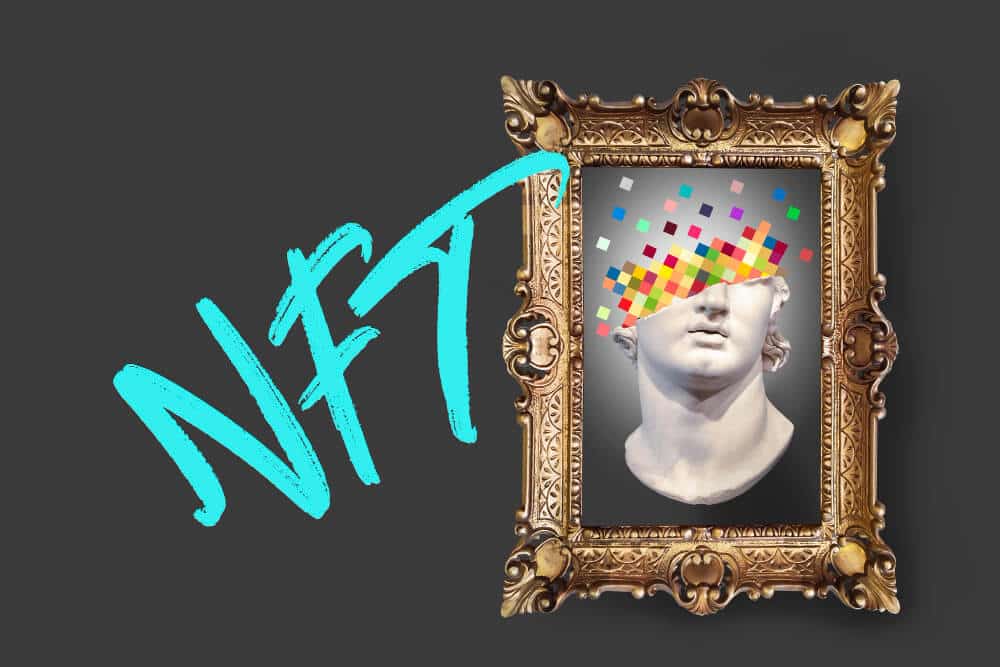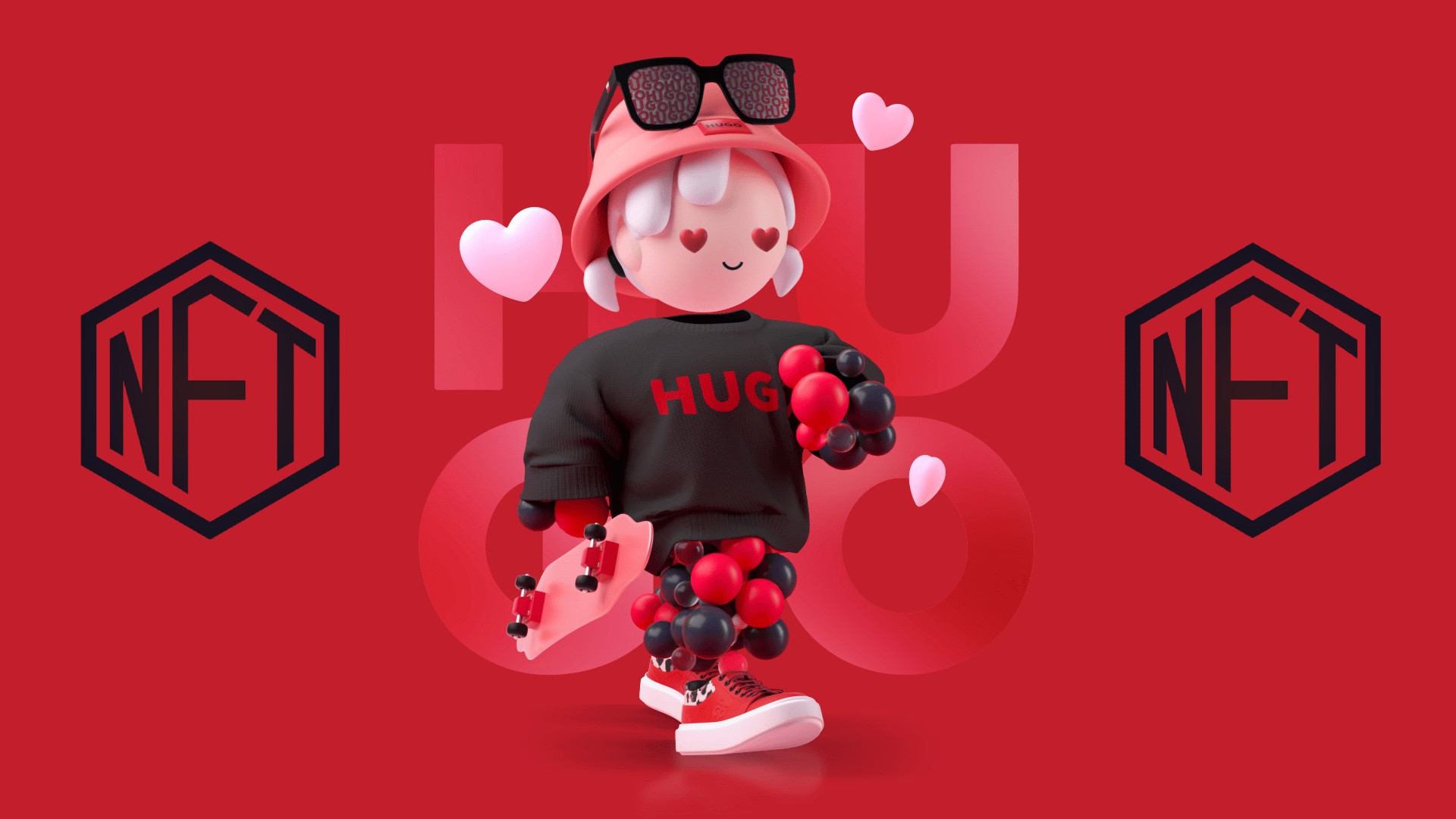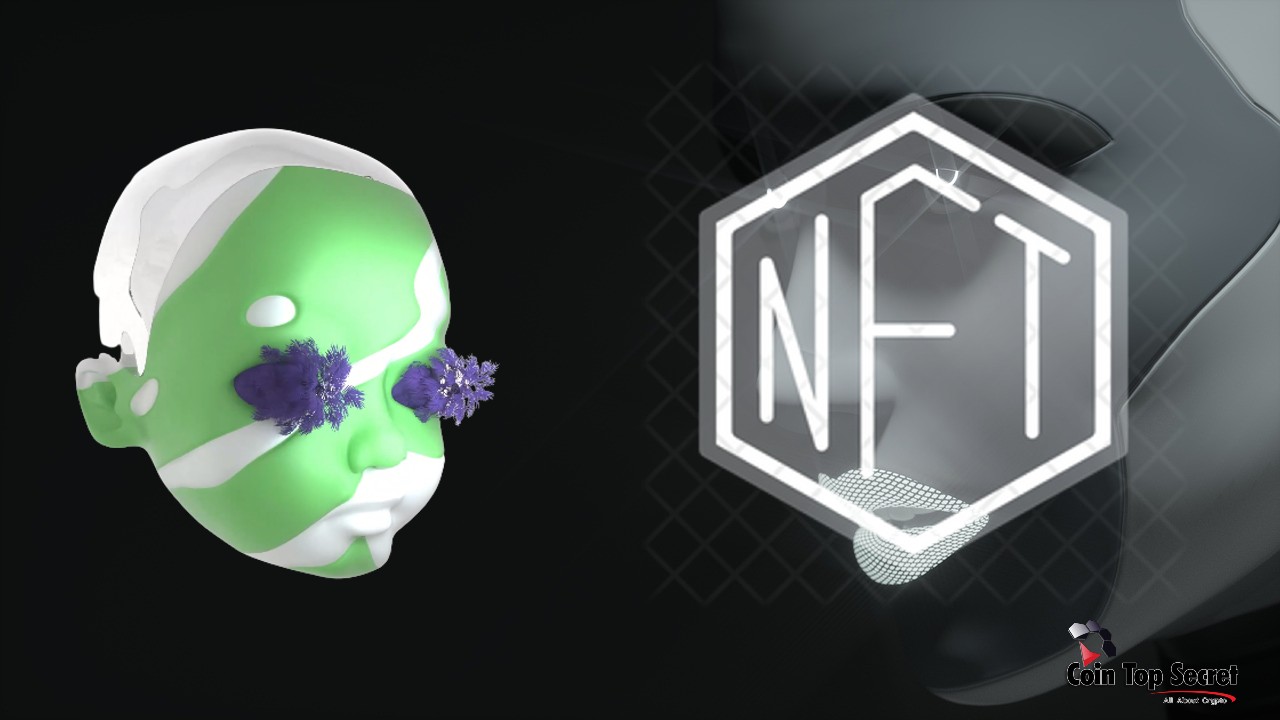The Evolving Landscape of Digital Collectibles: What’s Next for NFTs?
The digital world is constantly reinventing itself, and few innovations have captured public imagination quite like Non-Fungible Tokens (NFTs). What began as a niche for digital artists and collectors has rapidly expanded, now touching nearly every industry. As we look towards 2025, a fresh wave of NFT trends is emerging, promising to redefine digital ownership, utility, and interaction. This evolution moves far beyond simple profile pictures, ushering in an era of sophisticated integration and real-world impact.
Understanding these burgeoning NFT trends is crucial for investors, creators, and enthusiasts alike. The market is maturing, driven by technological advancements, increasing institutional interest, and a clearer understanding of blockchain’s potential. From tokenizing tangible assets to powering the next generation of gaming, the future of NFTs is multifaceted and incredibly exciting. Staying informed about these shifts will be key to navigating the opportunities ahead in this dynamic space.
Real-World Asset (RWA) Tokenization: Bridging the Digital and Physical Divide
One of the most significant NFT trends shaping 2025 is the tokenization of Real-World Assets (RWAs). This involves representing tangible assets like real estate, luxury goods, commodities, and intellectual property as NFTs on a blockchain. The goal is to bring the transparency, liquidity, and immutability of blockchain technology to traditional markets.
RWA tokenization offers numerous benefits. It allows for fractional ownership, making high-value assets accessible to a broader range of investors. Imagine owning a small share of a commercial building or a rare piece of art, managed securely and transparently through an NFT. This dramatically lowers entry barriers and democratizes investment opportunities.
Democratizing Investment Through Fractional Ownership
Fractionalization is a core component of RWA tokenization. By breaking down expensive assets into smaller, more affordable NFT units, investors can participate with less capital. This not only expands the investor base but also increases the liquidity of historically illiquid assets. A property that might take months to sell can be partially traded almost instantly on a blockchain.
Furthermore, RWA NFTs can streamline legal processes and reduce administrative overhead. Smart contracts can automate dividend distribution, rental income, or royalty payments, removing the need for intermediaries. This efficiency translates to lower costs and faster transactions for all parties involved. The implications for global finance and investment are profound, positioning RWA tokenization as a dominant force among future NFT trends.
Challenges and Opportunities in RWA Tokenization
While promising, RWA tokenization faces challenges, particularly around regulatory clarity and legal enforceability across different jurisdictions. Establishing clear frameworks for asset ownership, transfer, and dispute resolution in a digital context is paramount for widespread adoption. However, ongoing discussions by global regulators indicate a growing interest in addressing these issues.
Despite the hurdles, the opportunities are immense. Financial institutions, real estate developers, and luxury brands are actively exploring RWA NFT applications. Early adopters are already seeing the benefits in terms of increased market access and operational efficiency. The push for real-world utility firmly places RWA tokenization at the forefront of key NFT trends.
GameFi 2.0 and the Evolving Metaverse Experience
Gaming has always been an early adopter of new technologies, and NFTs are no exception. GameFi, the fusion of gaming and decentralized finance, has already seen explosive growth. In 2025, we anticipate GameFi 2.0 to move beyond simple play-to-earn models, focusing on deeper immersion, interoperability, and true player ownership. These are exciting NFT trends for gamers.
The next generation of GameFi will emphasize robust in-game economies where NFT assets hold genuine utility and value. Players won’t just earn tokens; they’ll own unique characters, land, weapons, and cosmetics as NFTs that can be freely traded, rented, or even used across different virtual worlds. This level of interoperability will create a much richer and more persistent metaverse experience.
True Ownership and Interoperability in Virtual Worlds
Imagine buying a unique sword in one blockchain game and being able to display it in your virtual home in a different metaverse, or even use it as a cosmetic item in another compatible game. This vision of true digital ownership and cross-platform utility is a cornerstone of GameFi 2.0. NFTs make this possible by providing a verifiable, immutable record of ownership that isn’t tied to a single game developer’s servers.
Moreover, the metaverse itself is evolving into a more interconnected ecosystem. Companies are investing heavily in building digital spaces where users can socialize, work, shop, and play using their NFT avatars and assets. These interconnected virtual economies represent a powerful intersection of entertainment, social interaction, and commerce, driven by these foundational NFT trends.
Key Platforms Driving NFT Innovation
The landscape of platforms enabling these innovative NFT trends is rapidly expanding. From specialized RWA tokenization platforms to sprawling metaverse ecosystems, each plays a vital role in pushing the boundaries of what’s possible with NFTs.
| Platform Type | Example | Primary Trend | Pros | Cons | Best For |
|---|---|---|---|---|---|
| RWA Tokenization | Centrifuge | Real-World Asset Integration | Connects DeFi to real assets, higher yields | Complex regulatory considerations | Institutional investors, stable asset exposure |
| GameFi Ecosystem | The Sandbox | Metaverse & Gaming Utility | Vibrant user-generated content, strong community | High gas fees, steep learning curve | Gamers, metaverse builders, virtual real estate investors |
| AI Art NFT Generator | Hypothetical Platform X | AI-Powered Creation | Unique art generation, rapid prototyping | Ethical debates, potential copyright issues | Digital artists, generative art enthusiasts |
AI-Powered NFTs: Creation, Curation, and Analytics
Artificial Intelligence is set to become a powerful catalyst for NFT trends in 2025, revolutionizing everything from how NFTs are created to how they are discovered and valued. AI’s role will span across generative art, dynamic NFTs, and advanced market analytics, making the NFT space more intelligent and accessible.
AI-generated art has already gained traction, with algorithms capable of producing unique and intricate visual pieces. As AI models become more sophisticated, they will enable creators to generate vast collections of high-quality NFTs with unprecedented speed and scale. This will democratize art creation, allowing individuals without traditional artistic skills to produce stunning digital assets.
Generative Art and Dynamic NFTs
Beyond static images, AI will fuel the rise of dynamic NFTs. These NFTs can change and evolve over time based on external data inputs or specific conditions. For example, an AI-powered NFT artwork might change its visual properties in real-time based on weather patterns, stock market data, or even the owner’s activity in a metaverse. This introduces a new layer of interactivity and uniqueness.
The integration of AI also opens doors for personalized NFT experiences. AI algorithms could curate NFT recommendations based on user preferences, collecting habits, and market trends. This tailored approach will help users navigate the increasingly vast NFT landscape, making discovery more efficient and enjoyable. These intelligent NFT trends are set to profoundly impact the user experience.
AI for Market Analytics and Fraud Detection
On the analytical front, AI will play a crucial role in providing deeper insights into NFT market dynamics. Machine learning models can analyze vast datasets of sales history, rarity traits, and community sentiment to predict future value, identify emerging NFT trends, and detect potential wash trading or fraudulent activities. This will bring greater transparency and trust to the market.
For investors, AI-powered analytics tools will become indispensable for making informed decisions. These tools can identify undervalued assets, spot promising collections before they become mainstream, and mitigate risks. By leveraging AI, participants can gain a significant edge in the competitive NFT market, further solidifying the impact of these advanced NFT trends.
The Rise of Utility-Driven and Fractionalized NFTs
The era of NFTs being merely speculative digital images is rapidly fading. The next wave of NFT trends is firmly centered on utility. In 2025, NFTs will increasingly serve practical functions, unlocking exclusive access, benefits, and experiences for their holders. This shift towards utility is transforming NFTs from simple collectibles into powerful digital instruments.
Fractionalization, while important for RWAs, also extends to high-value digital collectibles. Owning a piece of a rare CryptoPunk or a Bored Ape Yacht Club NFT could become more common, allowing more people to participate in premium collections without buying the entire asset. This democratizes access and boosts liquidity for these blue-chip digital assets, making them accessible to a wider audience.
Unlocking Exclusive Access and Community Benefits
Utility NFTs are proving to be powerful tools for community building and engagement. Holding a specific NFT might grant you access to exclusive Discord channels, private events, early access to product launches, or even voting rights in a Decentralized Autonomous Organization (DAO). This creates strong, engaged communities around shared interests and ownership.
Brands are also exploring utility NFTs as a new form of loyalty program or membership. Imagine an NFT that acts as a lifetime pass to concerts, offers discounts on merchandise, or provides unique experiences. This moves beyond traditional loyalty points, offering a tangible, tradable digital asset that holds inherent value and prestige. These innovative NFT trends are reshaping customer relationships.
Digital Identity and Social NFTs
Another significant utility aspect is the emergence of NFTs as elements of digital identity. Your NFT avatar could represent your persona across various metaverses and social platforms. Beyond just profile pictures, these NFTs can carry metadata about your digital achievements, credentials, or affiliations, creating a rich, verifiable digital identity.
Social NFTs, which are often tied to community and identity, will become more prevalent. These could be dynamic tokens earned for contributions to a community, or unique digital badges representing milestones. They foster a sense of belonging and provide tangible recognition within digital spaces, making social interaction more meaningful. The interplay between identity and digital assets is a defining characteristic of future NFT trends.
Navigating Regulatory Landscapes and Institutional Adoption
As the NFT market matures, so too does the scrutiny from regulators worldwide. Clear regulatory frameworks are essential for widespread institutional adoption and for protecting consumers. In 2025, we can expect significant progress in defining how NFTs are classified—whether as commodities, securities, or unique digital assets—and how they should be taxed and governed.
This regulatory clarity, while potentially imposing stricter rules, is ultimately beneficial for the long-term health and stability of the NFT ecosystem. It will provide the necessary legal certainty for large institutions to confidently enter the space, bringing with them substantial capital, infrastructure, and a broader investor base. This institutional embrace will undoubtedly fuel future NFT trends.
The Role of Institutions and Traditional Finance
Traditional financial institutions are already eyeing the NFT space, particularly for RWA tokenization and high-value digital art. Investment banks, asset managers, and even central banks are exploring blockchain technology for issuing digital assets and streamlining financial processes. Their involvement will lend credibility and bring mainstream attention to NFTs.
Furthermore, the development of secure, compliant infrastructure for trading, custody, and managing NFTs will accelerate. This includes specialized exchanges, institutional-grade wallets, and robust legal frameworks tailored for digital assets. The convergence of traditional finance with decentralized technology is a powerful driver for the next stage of NFT trends.
Evolving Legal Frameworks and Compliance
Different jurisdictions are taking varied approaches to NFT regulation. Some are embracing a more permissive stance to foster innovation, while others are proceeding cautiously. This fragmented regulatory landscape presents challenges but also opportunities for regions that establish clear and supportive guidelines. Understanding these evolving legal frameworks will be crucial for any entity operating in the NFT space.
For creators and platforms, compliance will become an increasingly important aspect of their operations. This includes adhering to KYC (Know Your Customer) and AML (Anti-Money Laundering) regulations, as well as ensuring proper disclosure and consumer protection. A responsible and compliant approach will be key to unlocking the full potential of these transformative NFT trends.
The journey of NFTs from niche collectibles to pillars of the digital economy is a testament to their inherent potential. The NFT trends emerging in 2025 paint a picture of a more integrated, utility-driven, and regulated ecosystem. From fractionalized real-world assets to AI-powered creation and robust GameFi experiences, NFTs are set to redefine how we interact with, own, and derive value from digital assets. Staying informed and adaptable will be essential to capitalize on these exciting developments.
For more insights or collaboration opportunities, visit www.agentcircle.ai.
Frequently Asked Questions (FAQ)
What are the biggest NFT trends expected in 2025?
The major NFT trends for 2025 include Real-World Asset (RWA) tokenization, advanced GameFi 2.0 experiences with true player ownership, AI-powered NFT creation and analytics, and a strong focus on utility-driven and fractionalized NFTs. We also expect significant progress in regulatory frameworks and institutional adoption.
How will RWA tokenization impact average investors?
RWA tokenization will democratize investment by allowing fractional ownership of high-value assets like real estate or fine art, making them accessible to smaller investors. It will also increase liquidity for historically illiquid assets and reduce the need for traditional intermediaries, potentially lowering costs and speeding up transactions.
What is GameFi 2.0 and how does it differ from current play-to-earn models?
GameFi 2.0 goes beyond simple play-to-earn by focusing on deeper immersion, interoperability across different virtual worlds, and true player ownership of in-game assets as NFTs. It emphasizes robust in-game economies where NFT assets have genuine utility and value, fostering richer, more persistent metaverse experiences.
Can AI truly create valuable NFTs?
Yes, AI is increasingly capable of generating unique and complex digital art. In 2025, AI-powered tools will enable creators to produce high-quality NFTs at scale, and also drive the development of dynamic NFTs that evolve based on external data. AI will also assist in market analytics and fraud detection, adding value to the NFT ecosystem.
What are utility NFTs?
Utility NFTs provide practical functions beyond being simple collectibles. They can grant holders exclusive access to communities, events, or content, offer discounts, or provide voting rights in DAOs. They are also being explored as new forms of loyalty programs and components of digital identity across metaverses.
How will regulations affect the NFT market?
While potentially imposing stricter rules, regulatory clarity is crucial for the long-term stability and growth of the NFT market. It will provide the necessary legal certainty for large institutions to enter the space, fostering mainstream adoption and protecting consumers. Clear frameworks for classification, taxation, and compliance will be key.
References and Further Reading
- CoinDesk: RWA Tokenization: The Next Frontier
- Deloitte: The Future of the Metaverse and Web3
- Decrypt: What is GameFi?
- Forbes: How AI Is Reshaping The NFT Market
- Gartner: What Is Digital Identity And Why Is It Important?



